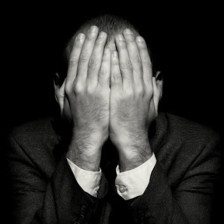Body dysmorphic disorder is characterized by preoccupation with ≥ 1 perceived defects in physical appearance that are not apparent or appear only slight to other people.
The preoccupation with appearance must cause clinically significant distress or impairment in social, occupational, academic, or other aspects of functioning. And at some point, patients must repetitively and excessively perform ≥ 1 behaviors (eg, mirror checking, comparing their appearance with that of other people) in response to the preoccupation with appearance. Diagnosis is based on history. Treatment consists of drug therapy (specifically, SSRIs or clomipramine), psychotherapy (specifically, cognitive-behavioral therapy), or both.
Body dysmorphic disorder usually begins during adolescence and may be somewhat more common among women. At any given point in time, about 2% of people have the disorder.
Symptoms and Signs
Symptoms may develop gradually or abruptly. Although intensity may vary, the disorder is thought usually to be chronic unless patients are appropriately treated. Concerns commonly involve the face or head but may involve any body part or any number of parts and may change from one part to another over time. For example, patients may be concerned about thinning hair, acne, wrinkles, scars, vascular markings, color of their complexion, or excessive facial or body hair. Or they may focus on the shape or size of the nose, eyes, ears, mouth, breasts, buttocks, legs, or other body part. Men (and rarely women) may have a form of the disorder called muscle dysmorphia, which involves preoccupation with the idea that their body is not sufficiently lean and muscular. Patients may describe the disliked body parts as looking ugly, unattractive, deformed, hideous, or monstrous.
Patients usually spend many hours a day worrying about their perceived defects and often mistakenly believe that people take special note of or mock them because of these defects. Most check themselves often in mirrors, others avoid mirrors, and still others alternate between the 2 behaviors.
Other common compulsive behaviors include excessive grooming, skin picking (to remove or fix perceived skin defects), reassurance seeking (about the perceived defects), and clothes changing. Most try to camouflage their perceived defects—eg, by growing a beard to hide perceived scars or by wearing a hat to cover slightly thinning hair. Many undergo dermatologic, dental, surgical, or other cosmetic treatment to correct their perceived defects, but such treatment is usually unsuccessful and may intensify their preoccupation. Men with muscle dysmorphia may use androgen supplements, which can be dangerous.
Because people with body dysmorphic disorder feel self-conscious about their appearance, they may avoid going out in public. For most, social, occupational, academic, and other aspects of functioning are impaired—often substantially—because of their concerns about appearance. Some leave their homes only at night; others, not at all. Social isolation, depression, repeated hospitalization, and suicidal behavior are common.
The degree of insight varies, but it is usually poor or absent. That is, patients genuinely believe that the disliked body part probably (poor insight) or definitely (absent insight) looks abnormal, ugly, or unattractive.
Diagnosis Clinical criteria
Because many patients are too embarrassed and ashamed to reveal their symptoms, the disorder may go undiagnosed for years. It is distinguished from normal concerns about appearance because the preoccupations are time-consuming and cause significant distress, impairment in functioning, or both.
Diagnosis is based on history. If the only concern is body shape and weight, an eating disorder may be the more accurate diagnosis (see Anorexia Nervosa); if the only concern is the appearance of sex characteristics, a diagnosis of gender dysphoria may be considered (see Gender Identity Disorder and Transsexualism).
Criteria include the following:
- Preoccupation with one or more perceived defects in appearance that are not observable or appear slight to others
- Performance of repetitive behaviors (eg, mirror checking, excessive grooming) in response to the appearance concerns
- The preoccupation causes significant distress or impairs social, occupational or other areas of functioning
Treatment
SSRIs and clomipramine
Cognitive-behavioral therapy
Certain antidepressants, including SSRIs (see Selective serotonin reuptake inhibitors (SSRIs)) and clomipramine (a tricyclic antidepressant with potent serotonergic effects), are often very effective. Patients often require higher doses than are typically needed for depression and most anxiety disorders.
Cognitive-behavioral therapy that is tailored to the specific symptoms of body dysmorphic disorder is currently the psychotherapy of choice. Cognitive approaches and exposure and ritual prevention are essential elements of therapy. Clinicians have patients face situations they fear or avoid while refraining from performing their rituals. Because most patients have poor or absent insight, motivational interviewing is often needed to increase their willingness to participate and stay in treatment.
Many experts believe that combining exposure and ritual prevention with drug therapy is best for severe cases.
Source: The Merck Manual




